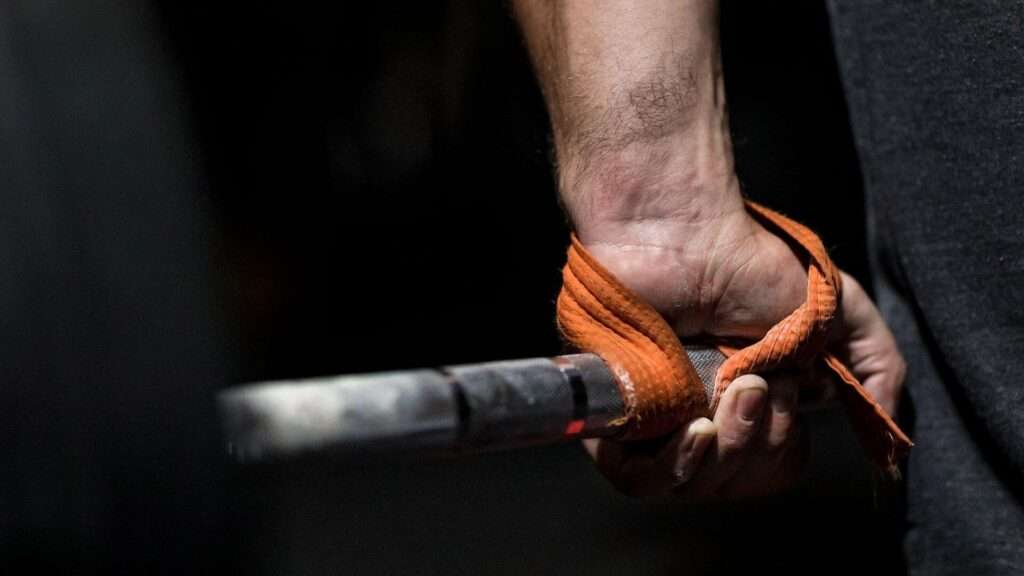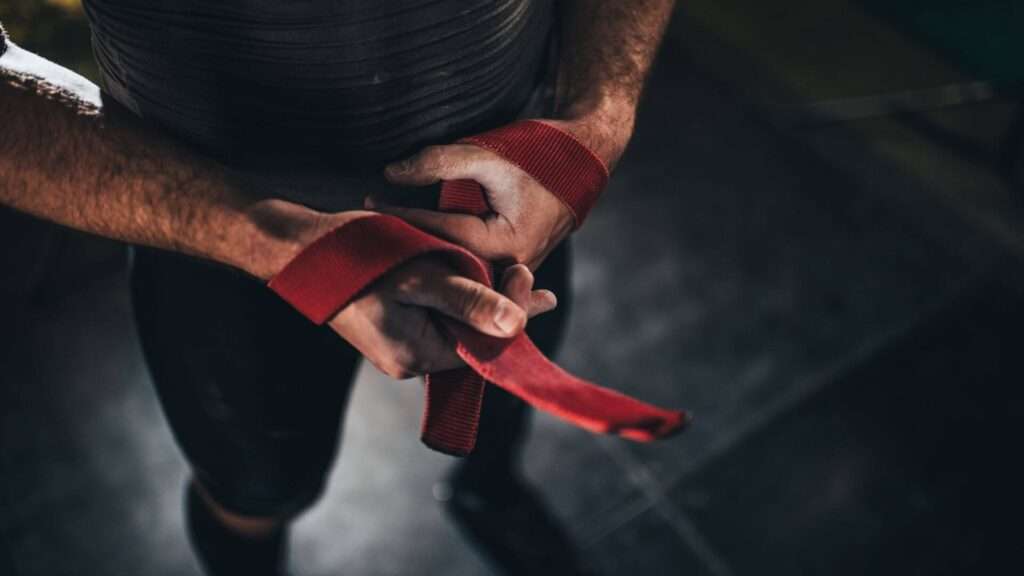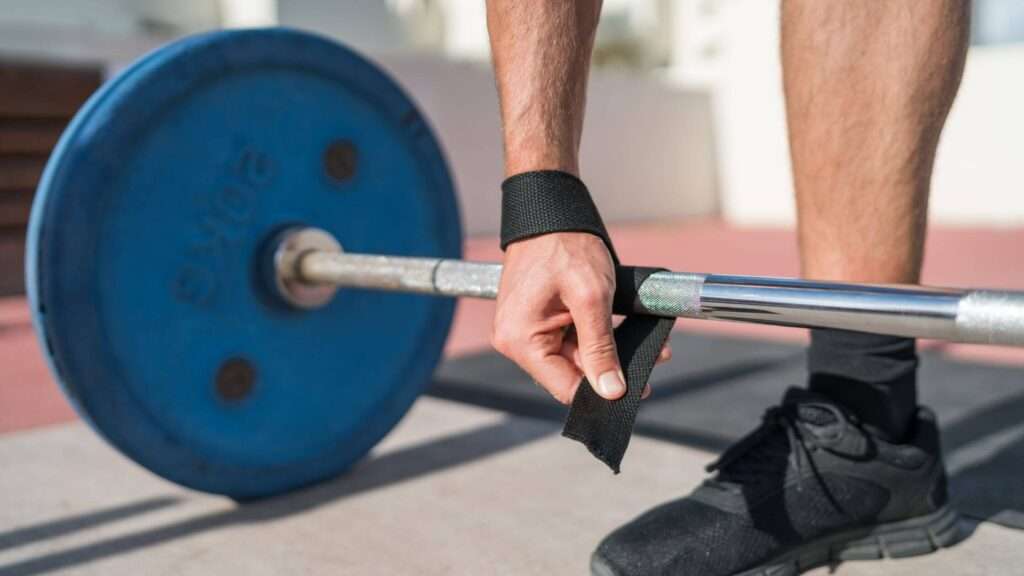What Are Weightlifting Straps?
Weightlifting straps are sometimes known as wrist straps. The majority of individuals are unaware of the importance of weightlifting straps. They provide a way to secure heavy weights, which can help you lift more weight and improve your overall performance. Lifting straps will help you keep your weight under control and keep your hands from slipping.
In addition, they can help improve grip strength and protect your hands from injuries while lifting heavy weights. This article will help you understand weightlifting straps, including their benefits and drawbacks. We’ll try to cover all aspects of weightlifting straps in this article.
Types of weightlifting straps?
Weightlifting straps come in various materials, sizes, and styles. Lifting straps are typically made of cotton, nylon, or leather. And The form you choose will be determined by your taste.
The most common type of strap is the cotton strap. Cotton straps are solid and durable, making them ideal for heavy lifting.
Nylon straps are another popular option. They are lighter than cotton straps and easier to adjust. Yet, they are not as long-lasting.
Leather straps are the most expensive option but also the most durable. They offer an excellent grip and are very easy to adjust. However, they can be challenging to break in and may not provide the same support as other types of straps.
These lifting straps wrap around your wrist in three distinct forms: a figure-eight, a closed-loop, or a lasso.
- Figure 8 Lifting Strap:
Figure 8 lifting straps are named by their shape, which is fashioned like the number 8. The form of Figure 8 ensures a firm hold by firmly anchoring the user’s wrists to the bar. Therefore, the straps will keep you linked to the bar even if you let go of it.
If you’re looking for a lifting strap that will provide you with the support and grip you need, look no further than the Figure 8 lifting strap. The infinity loop around your wrists in a double manner, preventing wrist slippage due to loss of grip.
Figure 8 Lifting Strap lets you focus on pulling with maximum arm strength, allowing muscle growth instead of all your effort going into the hold and putting strain on your wrists. Plus, these straps are designed to safeguard your lift, ensuring that you can confidently perform deadlifts, heavy shrugs, or rows.
So if you’re ready to take your lifting game to the next level, pick up a set of figure 8 lifting straps.
- Olympic/Closed Loop Lifting Straps:
The Olympic weightlifting straps are the polar opposite of the Figure 8 straps and are often dubbed closed-loop straps due to their round form. Olympic/Closed-Loop Lifting Straps are made from a heavy-duty material that can withstand intense workouts.
These straps are great for deadlifts, rack pulls, and rows, among other pulling exercises. Olympic Straps are designed to meet the rigorous demands of Olympic competitors by striking the optimal balance between lightness and durability.
These straps are specially designed for Olympic powerlifters and weightlifters who need to move fast and lift heavy weights. They are constructed with resilient materials that can resist the most extreme degrees of stress and pressure.
If you’re weightlifting, there are a few things you’ll want to look for in Olympic straps. First, Olympic straps are shorter and will allow for an easier and faster release of the barbell. However, they don’t offer a firm grip because the strap wraps around the barbell fewer times.
- Lasso Lifting Strap:
The lasso strap consists of a wrist loop and an extension that loops around the bar. For a more secure grip on the barbell, it may be looped over itself many times. This is the most popular type of wrist strap because it can be used for light workouts and more complex attempts to break previous records.
For all types of weight lifting training, lasso lifting straps are perfect for saving your hands and preventing injuries. Lasso Lifting Straps provide a more comfortable grip and distribute the weight more evenly across the palm for increased stability. In addition, lasso lifting straps wrap around the bar several times.
The simple use of lasso lifting straps makes them a good alternative for novice lifters, while expert lifters will enjoy the increased thickness of the strap. The Lasso Lifting Straps are universally sized and may be adjusted to meet various widths.
- Lifting Straps with Padding:
These lifting straps have a padded cushion between them, making them ideal for those who want extra safety and comfort while lifting weights. Also, the padding puts a layer of protection between the strap and your skin to keep you from getting chafed or feeling uncomfortable.
Additionally, the padding helps distribute the weight more evenly across your hands, making the lifting process more comfortable overall. Whether you’re a novice or an experienced weightlifter, these straps are an excellent option for anyone looking for a little extra support while lifting.
How to use weightlifting straps effectively?
To use the lifting straps:
- Wrap them around the barbell or dumbbell and secure them so that the straps are tight enough not to slip but not too tight that they cut off circulation.
- When using the straps, keep your grip close to the center of the bar.
- Maintain solid form during the lift by keeping your elbows close to your sides.
- Hold the bar tightly and lift!
Now you are ready to lift weights with your lifting straps. Enjoy your improved grip and lifting performance!
the Benefits of Using Weight Lifting Straps
Weight lifting straps can provide several benefits:

- Improved grip strength:
Weightlifting straps are often used to improve grip strength. This is done by wrapping the strap around the bar, which creates more friction and helps the lifter get a better hold on the bar.
When lifting heavier weights, lifting straps can help. This can help powerlifters and weightlifters who need to do exercises with heavy weights by making their grips stronger. Using lifting straps, they can keep their hands from slipping off the bar, which can help them maintain a better grip.
- Protection for the hands:
Lifting straps can help protect the hands from calluses and blisters, two of the most common problems associated with weightlifting. By wrapping around the barbell or dumbbell, the straps create a barrier between the skin and the weight, which can help reduce friction and irritation.
In addition, they provide extra support for the hands and fingers. So for those who lift weights regularly, it’s the best choice.
- Lifting performance has improved:
Lifting straps can help to improve lifting performance by providing added stability and support for the wrists and hands. As a result, lifting straps can benefit powerlifters and weightlifters who want to increase their lifting capabilities.
In addition, lifting straps can provide a more stable lifting platform for those focused on hypertrophy. It would help if you had these straps when lifting heavy weights because a more stable lifting platform can help keep you from getting hurt.
- Enhanced muscle growth:
Lifting straps can help promote muscle growth by providing extra support and stability during lifting exercises. This can be beneficial for those who are looking to increase their muscle mass.
This is because lifting straps allow you to lift the weight through a greater range of motion, which can help to stimulate more muscle growth.
- Reduce Injury Risk:
Lifting straps can help reduce the risk of injuries, such as strains and sprains, by providing support and stability for the wrists and hands.
In addition, weightlifting straps can help powerlifters and weightlifters who lift heavy weights. It helps avoid injury by providing a more secure lifting platform.
The summarize Pros of Using Weight Lifting Straps
- Weightlifting straps can help you lift heavier weights.
- They can also help you maintain good form while lifting and preventing injuries.
- Lifting straps can also help to increase your grip strength over time.
- They are relatively inexpensive and easy to use, making them an excellent tool for weightlifters.
- Weightlifting straps can be used for various exercises, not just weightlifting.

Consider utilizing weightlifting straps to improve your weightlifting performance. You may discover that they provide the motivation you need to attain your objectives.
The Cons of Using Weight Lifting Straps
Lifters should be aware of a few critical disadvantages to weightlifting straps before deciding whether or not to use them.
- Straps can provide a false sense of security and lead to poor lifting techniques. When misused, weightlifting straps can increase the risk of injury.
- Weightlifting straps can also lead to bad habits, like relying on the straps to do lifts instead of focusing on proper form and technique.
- Weightlifting straps can be uncomfortable and cause chafing or irritation, mainly when used for long periods.
Overall, weightlifting straps should be used with caution and only by experienced lifters aware of the risks. However, weightlifting straps can be a helpful training tool when appropriately used.
But people who are just starting to lift weights or are new to it should focus on learning the right way to do it before using any weightlifting accessory.
Things to know when buying weight lifting straps
When choosing weightlifting straps, it is essential to ensure they are well stitched and made of solid materials.
Textured weightlifting straps are also a good option, as they provide more friction and prevent the bar from slipping out of your hands. Also, look for straps that have a comfortable grip and suit you well.
Lifting straps will ensure you can use the straps for various exercises and weightlifting routines. Finally, avoid stretchy weightlifting straps, as they will lose shape quickly.
- Cotton and leather straps:
Cotton and nylon straps are stiffer and less prone to deformation than leather straps. However, leather straps are more flexible and thus better for cleaning.
- Nylon Straps:
The nylon straps let you swiftly release the dumbbell. There are two types of nylon straps: those with an aluminium buckle and those with a Velcro clasp. The latter type is easier to open.
- Padded Straps:
You can also buy padded straps, which may offer more comfort or straps with hook-and-loop fasteners. However, they may be expensive and may considerably enhance functionality or comfort.
In the end, when selecting weightlifting straps, keep these things in mind to ensure you get a quality product that will serve your needs.
Furthermore, consider your budget and the type of weightlifting you’ll be doing before making a purchase.
faqs About weightlifting straps
Wrist Bands vs. Lifting Straps: What’s the Difference?
Two of the most popular accessories in the lifting industry are wrist bands and lifting straps. So, what’s the difference between the two?
Wrist bands are typically made of a stretchy material, like elastic, and go around your wrists. They support your wrist joints and help keep your wrists straight while lifting.
Lifting straps, on the other hand, are mostly made of a non-stretchy material, like nylon or leather. They loop around your wrist and the bar and take the weight off your hands and wrists.
Lifting straps generally vary because they boost gripping ability, whereas wrist bands support the wrist joint under stress.
Are weightlifting straps washable?
The answer is yes; weightlifting straps are washable. But it’s essential to follow the care instructions to make sure your straps stay in good shape.
To wash your weightlifting straps:
- Start soaking them in warm water with a mild detergent.
- Use a soft brush to clean any dirt or grime on the straps’ surface.
- Once you’ve finished washing, rinse the straps off with clean water.
- Allow the straps to dry completely before using them again.
Following these steps, you can keep your weightlifting straps clean and in good condition for many years.
Conclusion
Ultimately, weightlifting straps are a great tool to help you with your weightlifting journey. They can help you increase grip strength, protect your hands, and keep your form in check. However, they are not a magic bullet. They will not make you instantly stronger or prevent all injuries.
Disclaimer: Consult a qualified coach or trainer when using weightlifting straps, especially if you are a beginner.

